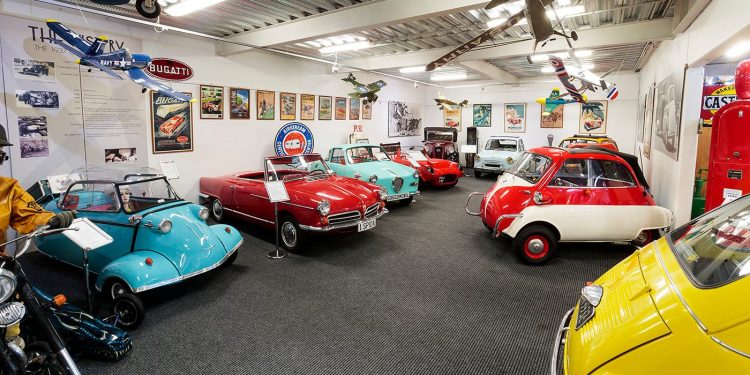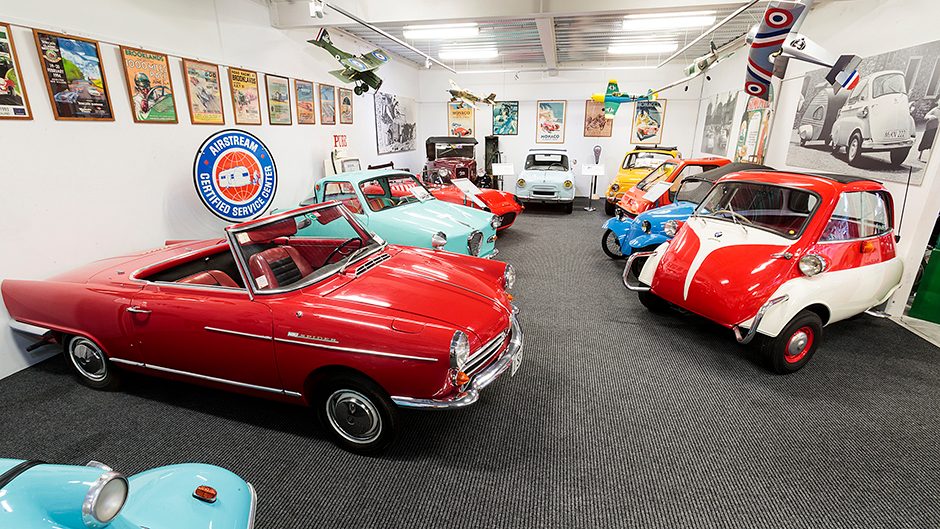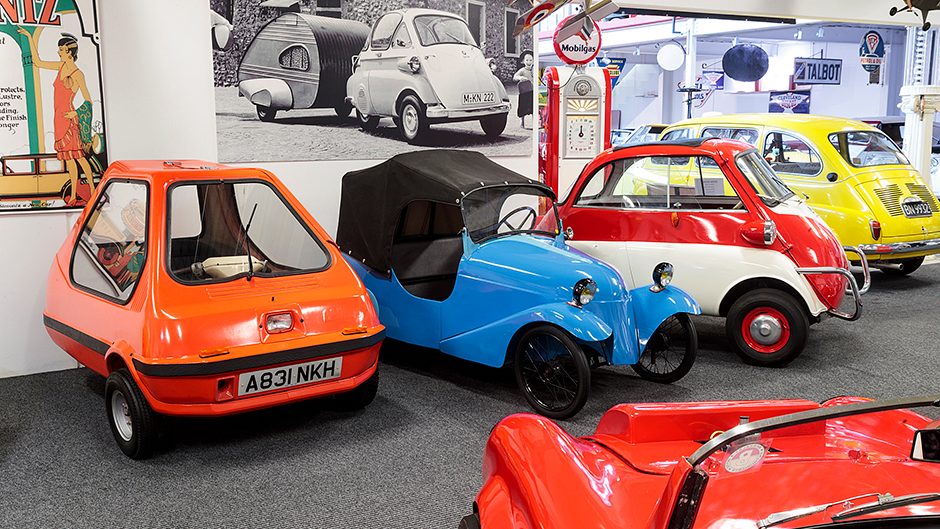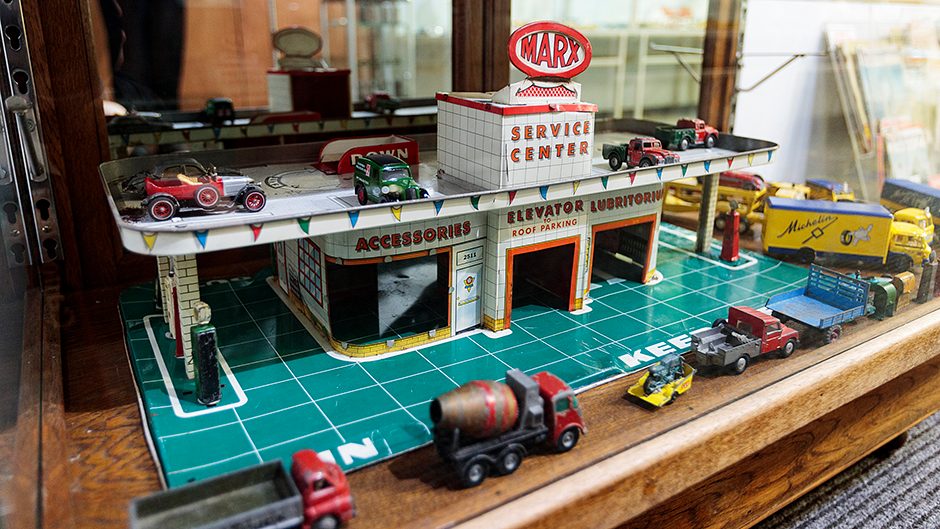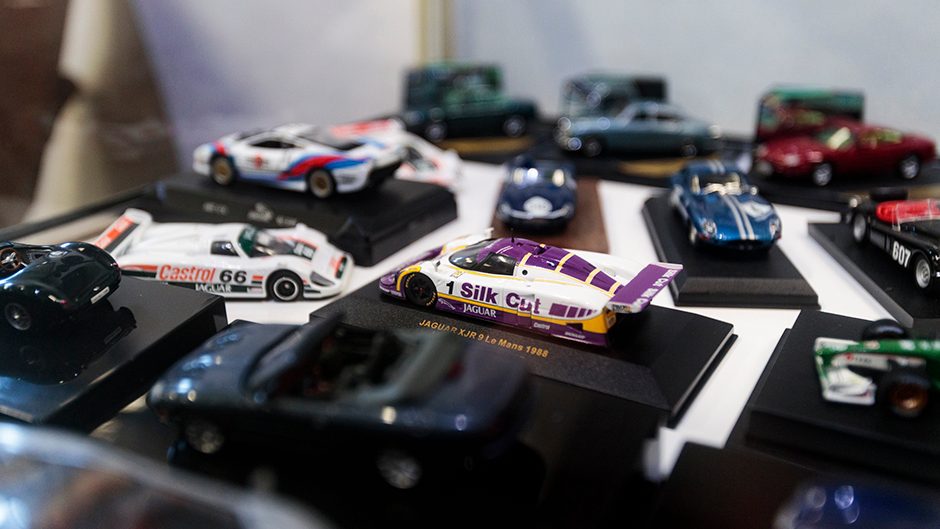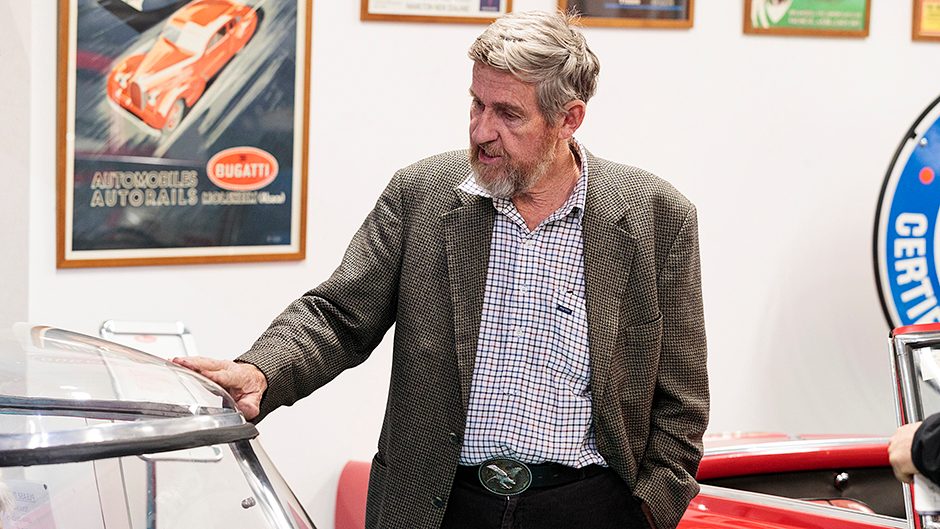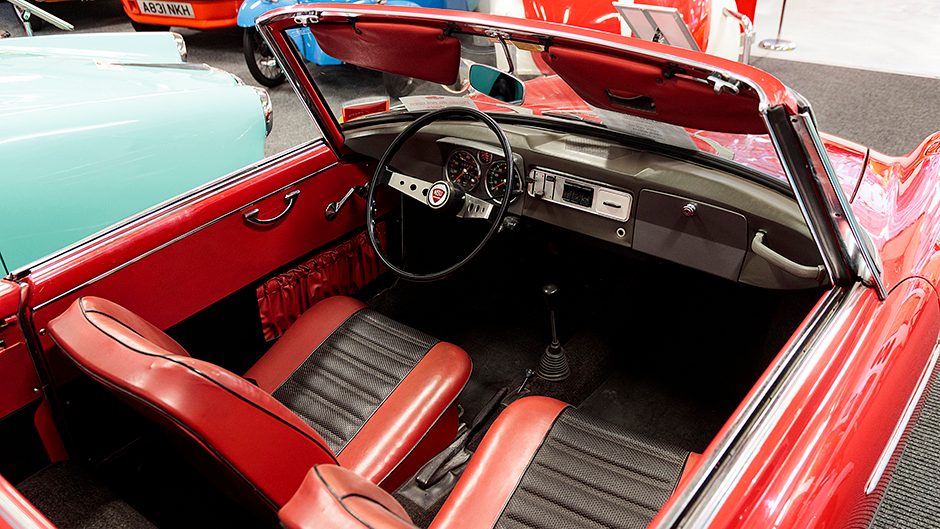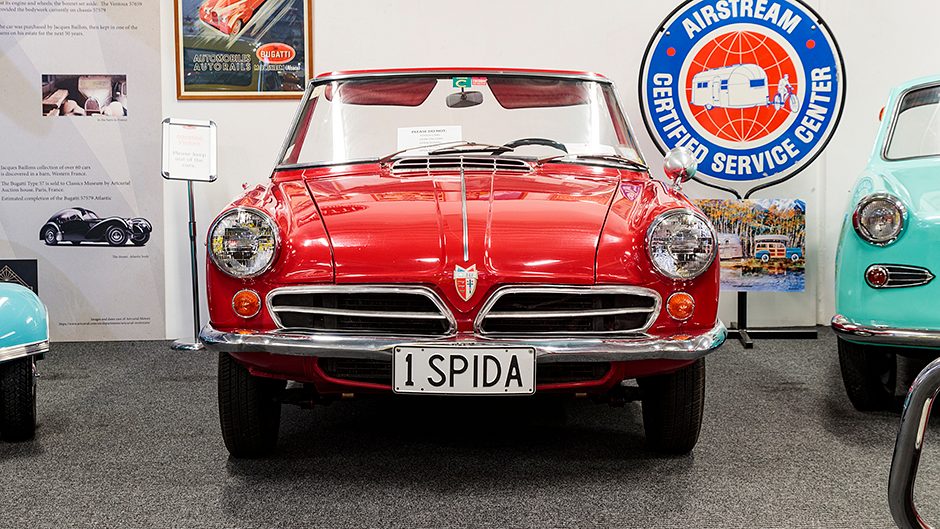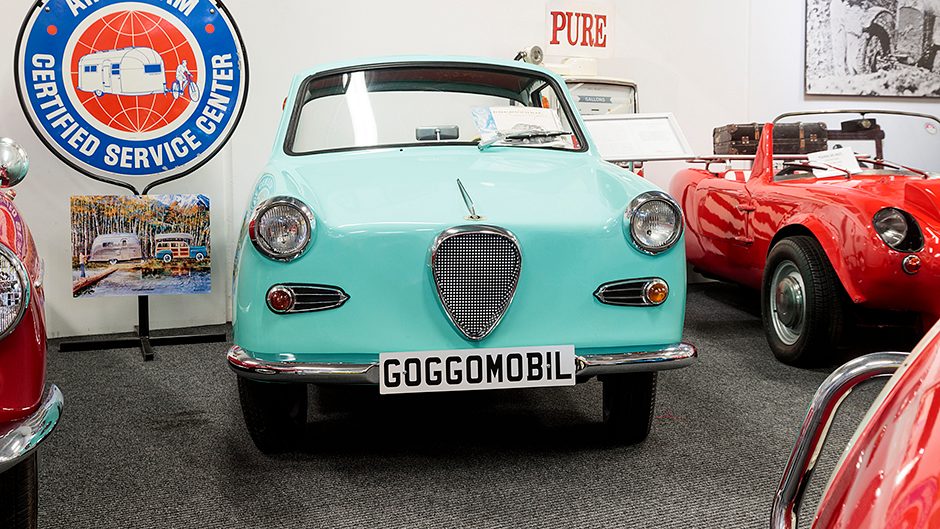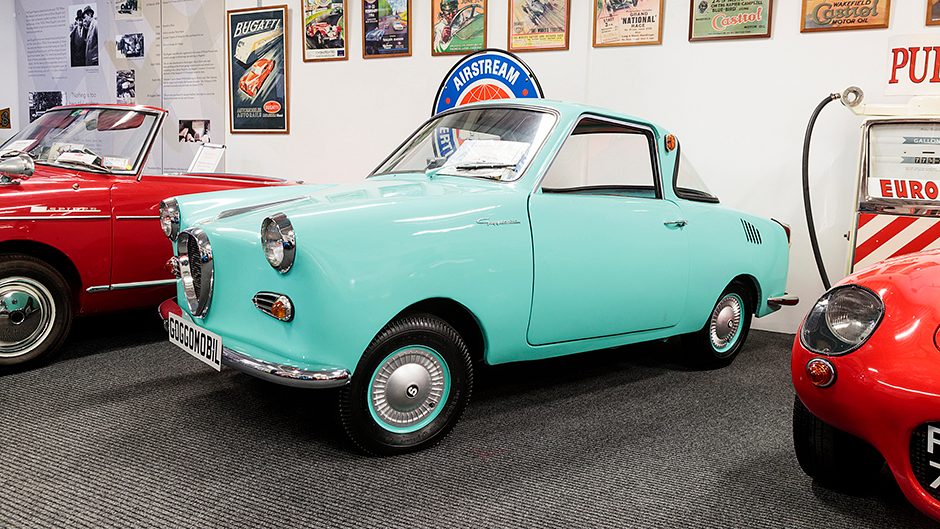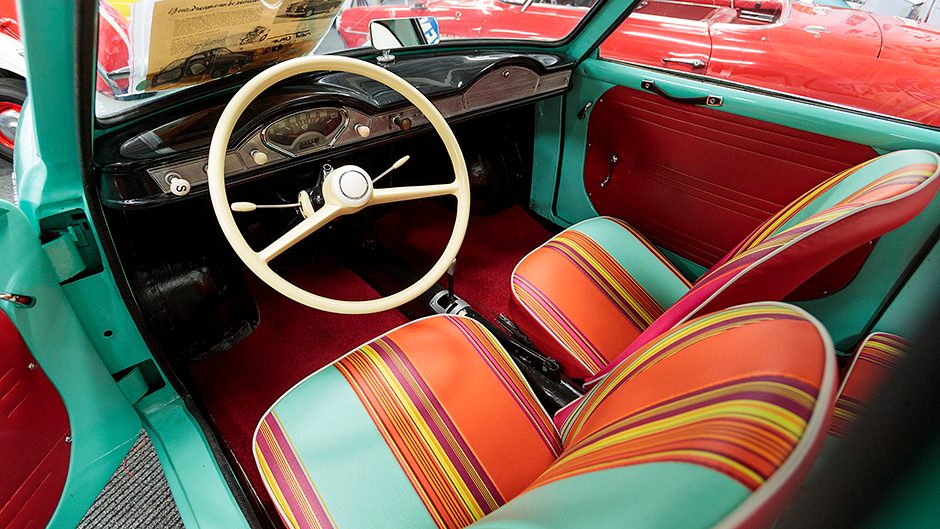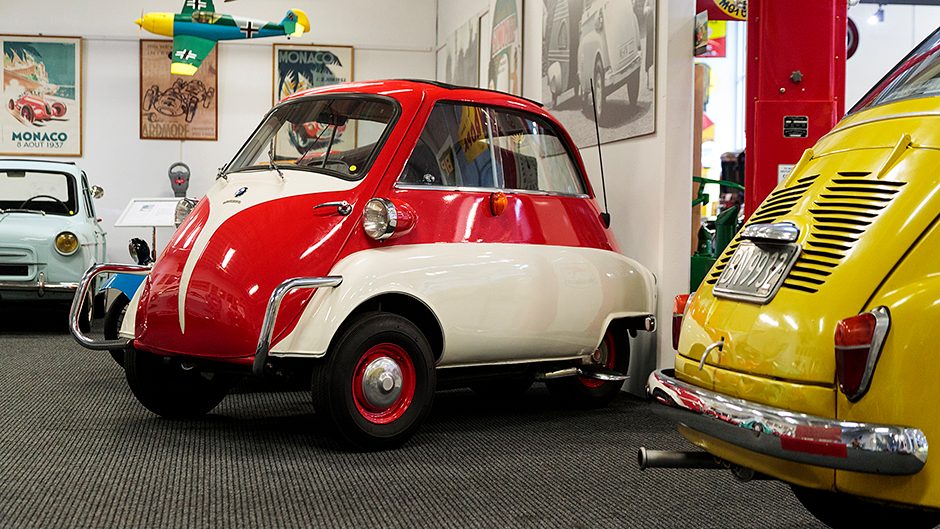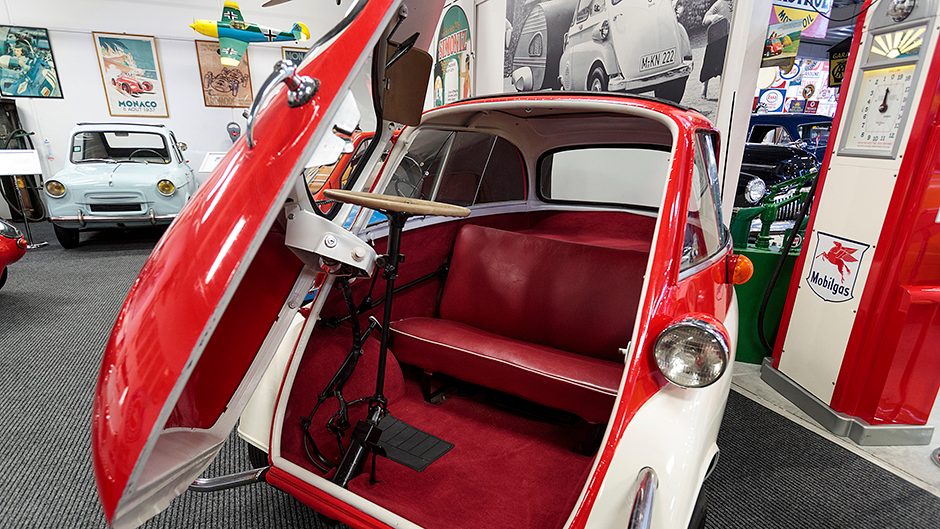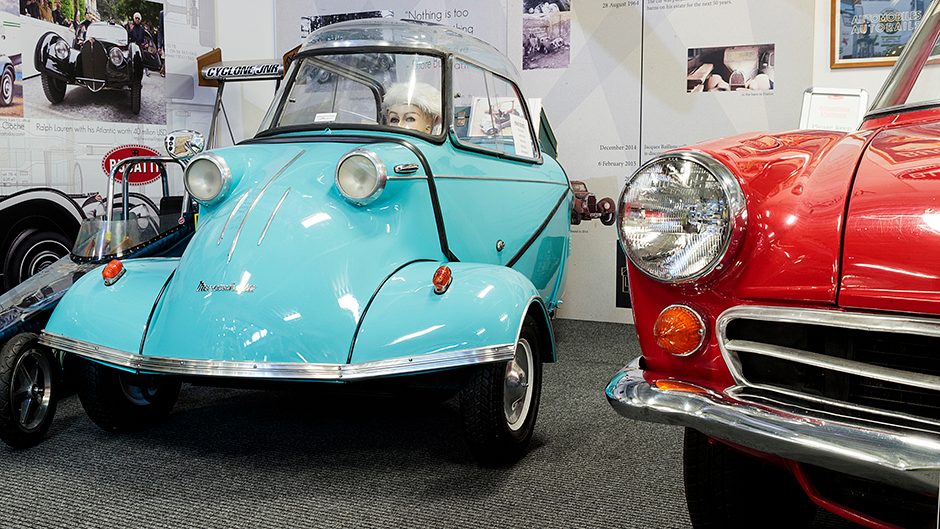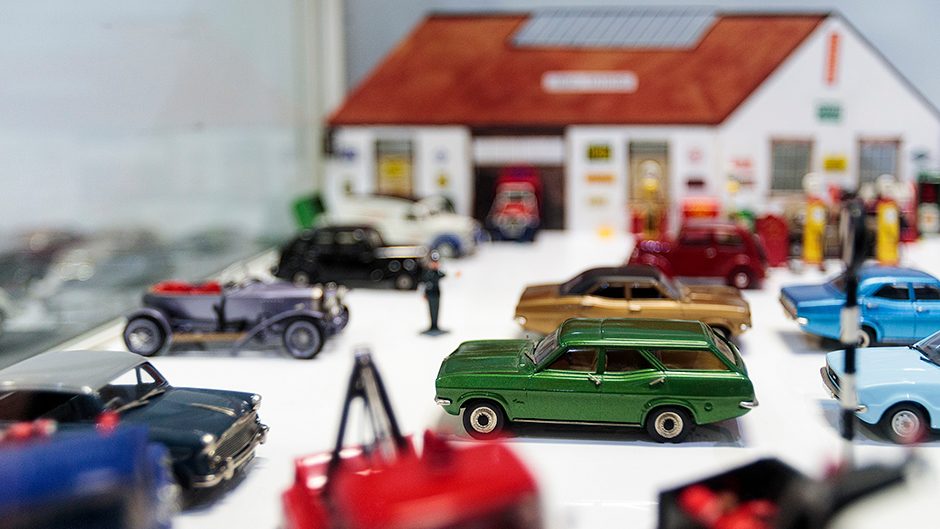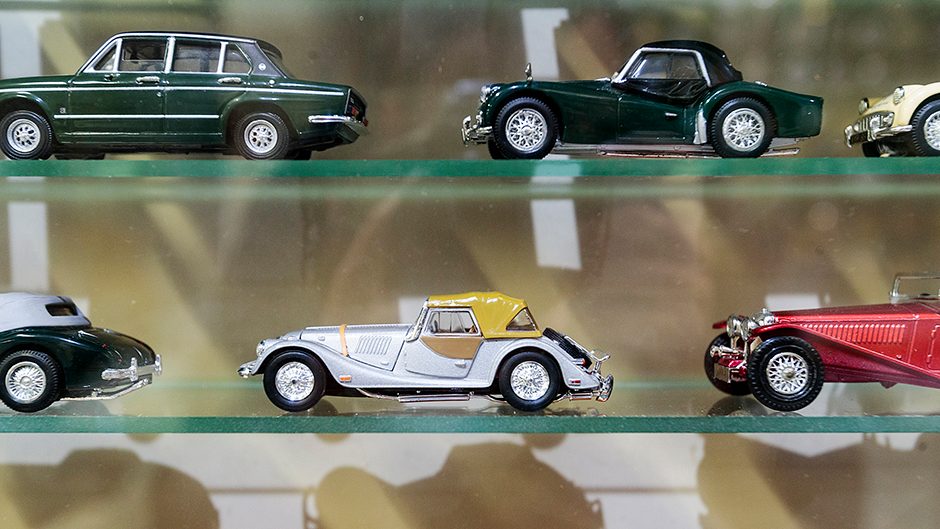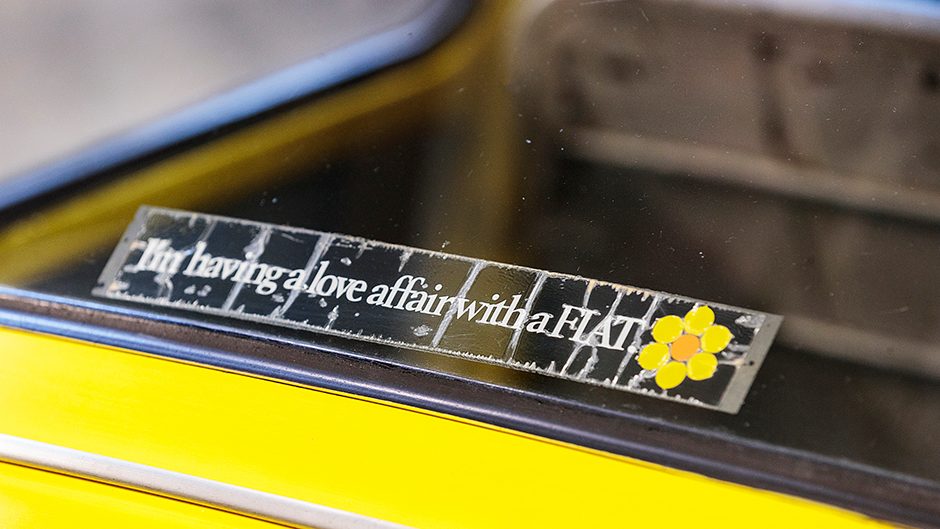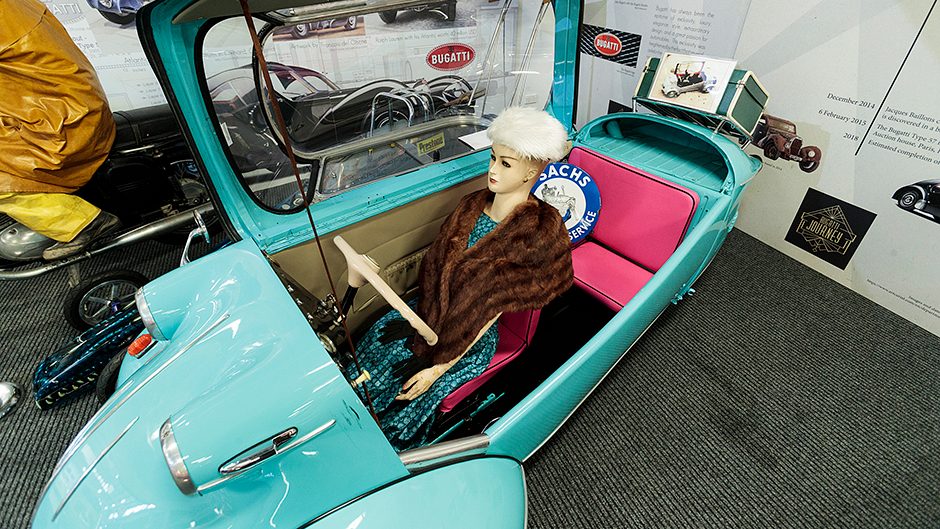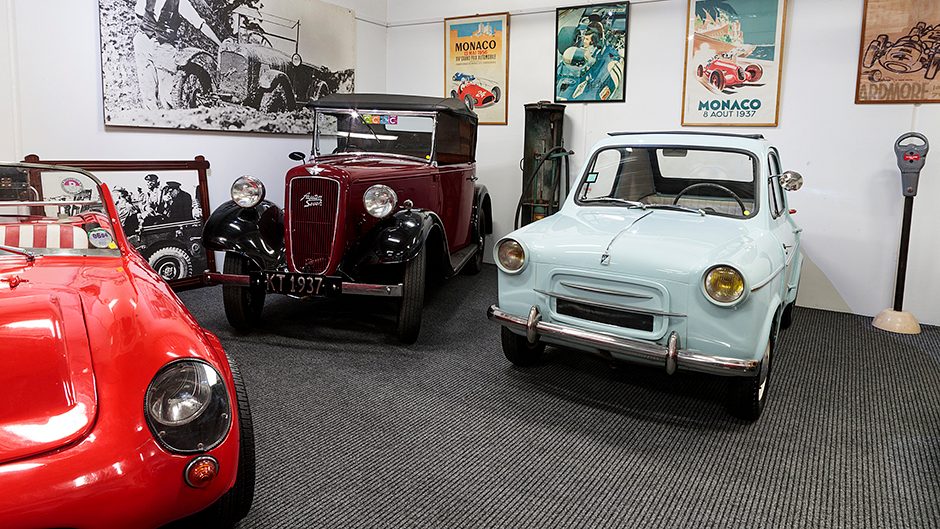Hamilton Classic Car Museum – Car kindy
Words Paul Owen | Photos Tom Gasnier
The micro-car hall at Hamilton’s Classic Car Museum is where you’ll find an interesting collection of some of the most freakish vehicles in existence. We journey to this hub of lilliputian motoring.
According to the Classic Car Museum’s founder, Tom Andrews, the biggest collection of microcars in this country can be found in an old dairy factory located in a remote part of Taranaki. However, if you’d rather visit a collection that’s more accessible and constantly open to the public, the microcar display at the museum contains most of the iconic models of this short-lived solution to post-WWII mobility.
Basically, micro-cars from the fifties and sixties come in two types. There’s those made in Axis countries (predominantly Germany and Italy) that adopted the shortest, lightest platforms that they could because of the scarcity of raw materials. On the victor’s side of the war, you’ll find a number of small-scale British start-ups, who saw the opportunity of making motoring more affordable by exploiting a registration loop-hole. In post-war Britain, any car with three wheels cost the same to register as a motorcycle, leading to a deluge of little tri-cars for sale.
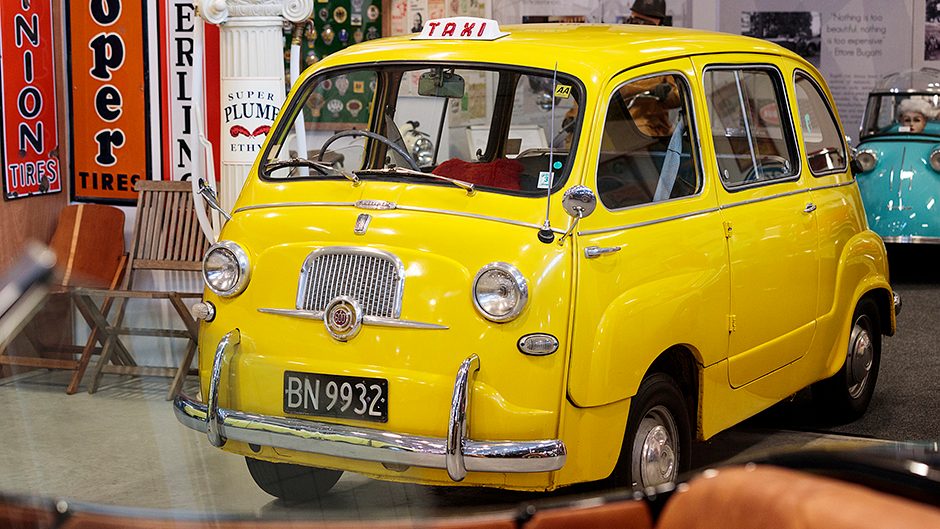
Common to both these genres is the use of motorcycle powertrains, especially those of the easily maintained two-stroke variety. Motorcycle factories were a low-priority target for aerial bombing during the war, leading to a comparative wealth of ready-to-go engines and gearboxes as European economies recovered from the most destructive period in their history. The two-stroke engine’s easy access for top-end maintenance made it the preferred combustion engine format among the backyard mechanics of the period.
When we visited recently, there were eight genuine micro-cars on show, though the museum has access to some 42 such automobiles from various sources, and these are swapped in and out on a regular basis. These eight were joined in the hall by a 1937 Austin 7, a 1957 Fiat 500 and an original Fiat Multipla (made between 1957 and 1965). These cars are slightly bigger and all enjoy increased cornering stability via the addition of a fourth wheel. They therefore represent more practical and mature designs, built with longevity in mind. Contrast these with the cars that follow here – a veritable freak-show of expedient engineering as the car industry of a war-ravaged Europe struggled to supply an insatiable demand for personal mobility. It seems that anything that simply drove at least one of its wheels would do…0-100:
Frenchman Charles Mochet invented the recumbent bicycle in the 1930s and his designs would set cycling speed records before being declared ineligible for the titles. He produced his first car in 1927, work that would be carried on by his son, Georges, after the sudden death of Charles in 1934 (immediately after all the cycling speed records were cancelled).
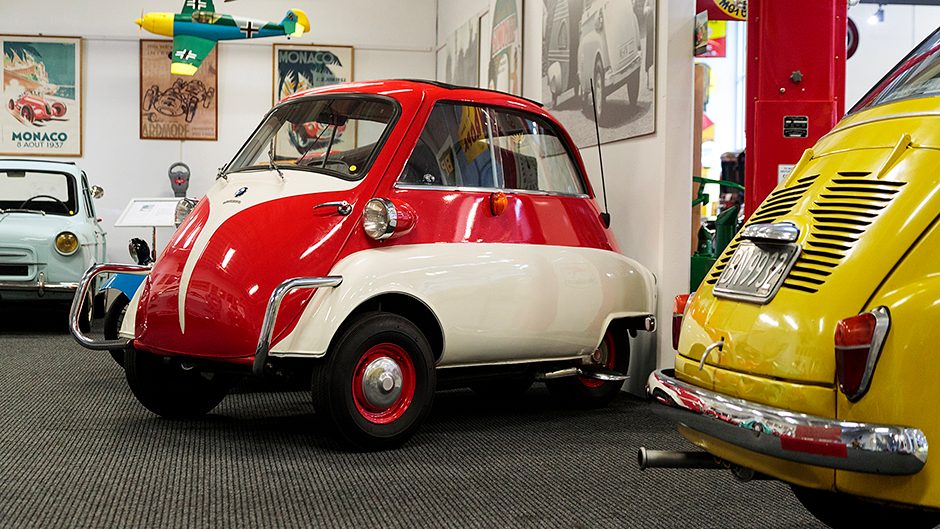
Georges’ most well known car, the CM-125, is powered by an air-cooled 175cc Zurcher two-stroke single. Although no registration was required for cars this small in France, the van version of the CM-125 was permitted to carry no more than 100kg.
Designed in Italy, made in France, the 400 definitely wasn’t your usual Vespa. It had four wheels, doors, a soft-top roof, and windows, and the engine was a lusty 400cc two-stroke inline twin that enabled the 400 to blow the doors off the less powerful and heavier Citroen 2CV. However annoyances like the need to constantly add oil to the petrol, the lack of opening windows on earliest versions, and a clunky floor-mounted three-speed gearshift limited sales of the only four-wheeled Vespa. Although an automatic petrol/oil mixing device was added in 1958, car buyers soon recognized that larger cars like the 2CV offered more metal for similar money, and production of the 400 ceased in 1961.
Goggomobil is arguably one of the greatest automotive brands names ever, simply because of the way it rolls off the tongue. The Bavarian company, Hans Glass Gmbh, made roughly 60,000 of these cute little coupes over a 10-year period, alongside their beautiful 1700GT, and the 2.6 litre V8-powered Glas 2600, the latter commonly referred to as the ‘Glaserati’.

The TS is arguably one of the most resolved microcars ever thanks to a slick-shifting four-speed Getrag gearbox and engines that made as much as 18bhp (0-100: how much time have you got?). However BMW’s hostile takeover of the company in 1966 saw the death of the Goggomobil brand the following year. The real prizes for BMW in the acquisition were Glas’ Dingolfing factory, a team of talented designers and engineers, and the access to valuable company patents like the one for the use of a timing belt with an overhead camshaft. Messerschmitt KR200 1959 Arguably the most iconic of microcars, tandem-seat ‘KabinenRoller’ models like this Messerschmitt KR200 are rapidly increasing in value.
Tom reckons he paid ‘virtually nothing for it six years ago,’ and although he’s not really focused on the appreciation of the display cars as they’re now all owned by a trust, he reckons that it’s worth between $50,000 and $60,000 now. He found it in the Netherlands, in a shed full of old motorcycles, and it was in ‘pretty tatty’ condition with the signature bubble roof broken. However, he was able to find a German firm making new roofs for KR Messerschmitts, which helped restore this version to original condition.
When Germany joined NATO in 1957, Messerschmitt was allowed to make aircraft again, and instantly lost interest in making the little 190cc two-stroke Sachs single-powered ‘scooters with a cabin’. Production continued under a new company formed by designer, Fritz Frend, until 1964, when cars like the Mini began killing off the demand for microcars. Personally, I’d love to see the ‘KabinenRoller’ reinvented as a new-age electric vehicle. Isetta Motocoupe 300 1958 Besides the entire Goggomobil range, the other microcar to play a key role in the history of BMW was, of course, the Isetta Motocoupe.
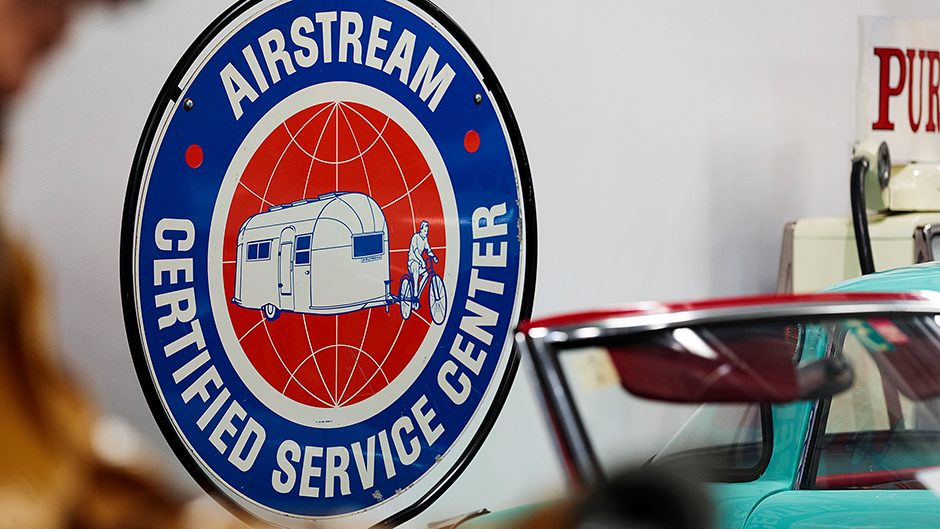
The Isetta would keep the company going throughout the 1950s (along with the brand’s two-wheelers) during a decade when sales of luxury cars were extremely slow. However, although BMW would build roughly 180,000 Isettas and nearly one million two-wheelers during the decade, the slim profit margins of low-cost vehicles began to tell – the constant red ink in the books led to the eventual buy-out of the Bavarian brand in 1959 by the secretive Quandt family. The Quandts still remain in control today, but the fact remains that there would be no BMWs in 21st Century showrooms had the brand not had the Isetta and the bikes to sell in the immediate post-war decade.
Designed by Italian, Renzo Rivolta, in 1953, the Isetta was originally intended to be built by his company, Iso. However, with plenty of other projects on the drawing board, Rivolta instead sold the licence to build the microcar to companies the world over. Discussions with BMW kicked off in 1954, but the Bavarians soon re-engineered the entire vehicle to the point where no part between a BMW Isetta and its Iso counterpart is interchangeable.
A key advantage of the BMW version is the company’s 250cc four-stroke single, inherited from the strongest-selling bike in the range at the time, the humble R25. Producing just 12bhp, the 250 could propel the four-wheeled Isetta up to a speed of 53mph if you waited long enough. On the plus side, this was the first four-wheeler capable of achieving 79 miles per gallon. The museum’s car is a 300, with the engine bumped to 298cc, resulting in the production of an extra horse, and a mildly increased immunity to the effects of uphill gradients.
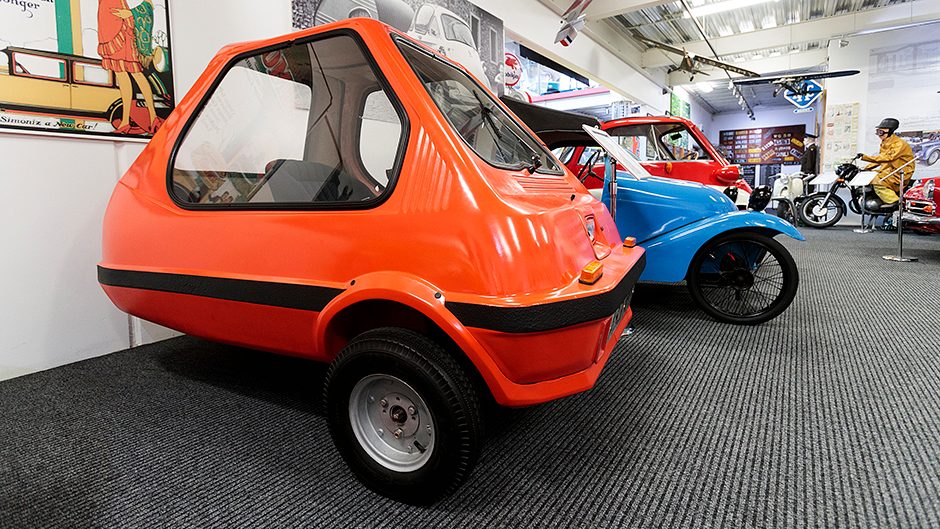
Famed 500cc car racer, Lawrie Bond, teamed up in 1956 with caravan maker, Charles Panter, to produce a series of fiberglass-bodied sports cars powered by an Excelsior single-cylinder two-stroke motorcycle engine. Of all versions, it was the three-wheeled T60 that would prove the most popular, powered by an engine enlarged to 328cc, and sporting enough extra room for groceries behind the front seats. A big factor in the T60’s success was that it had a single rear wheel and could therefore be registered as a motorcycle in the UK.
The Berkeley brand’s greatest claim to fame is that it was the first car to be produced with a monocoque body. With the engine producing 18bhp and the unique new body construction resulting in an overall weight below 300kg, the T60 was hailed for its ability to package performance along with fuel efficiency.
Hold your breath for this news: you can still buy this car, named after a famous deer. Well sort of, on both counts. The Bamby’s designer, Alan Evans, restarted the company back in 2011, and now makes a car that mimics the Peel P50, a boxier, single-headlight design more reminiscent of the 1960s than the 1980s. The museum’s Bamby is the more pyramid-shaped vehicle that wowed crowds at the 1984 Ideal Home Show in London until the audience realized that you had to start the 49cc scooter engine by hand, and there was no reverse gear. Still, it did have a gull-wing door. The P50 Cars company now offers quite a range of microcars, with replicas of the KabinenRoller and Isetta joining the Peel. Just be prepared for a lengthy wait before the car is built, with prices ranging from £8000 and up.
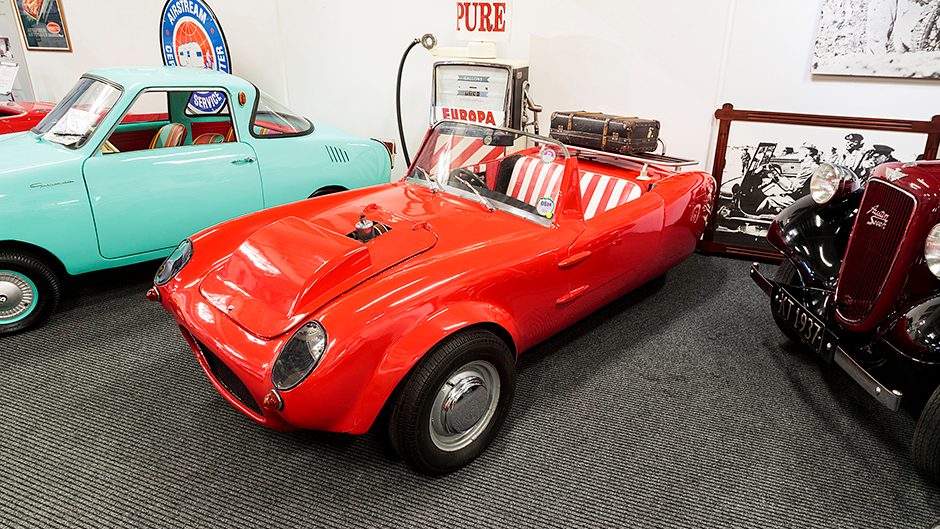
Last but not least, this ground-breaking and gorgeous Bertone-designed sportscar. All rotary-engined cars are odd-balls, but this ultra-light one is even weirder than the others. For starters, you have to find the 498cc rotary engine like it’s some kind of treasure hunt. First you look under the bonnet – nope, not there. Then you open the boot, strike two! Eventually you’ll find an engine bay located behind the rear axles, beneath the rear stowage compartment floor.
The rotary is so compact that it looks no bigger than a blender. It developed 50bhp on a good day when the rotor seals were in good nick, revving to 8000rpm and kicking Porsche 356 ass. No wonder Jay Leno has one… one of just 2300 made.


